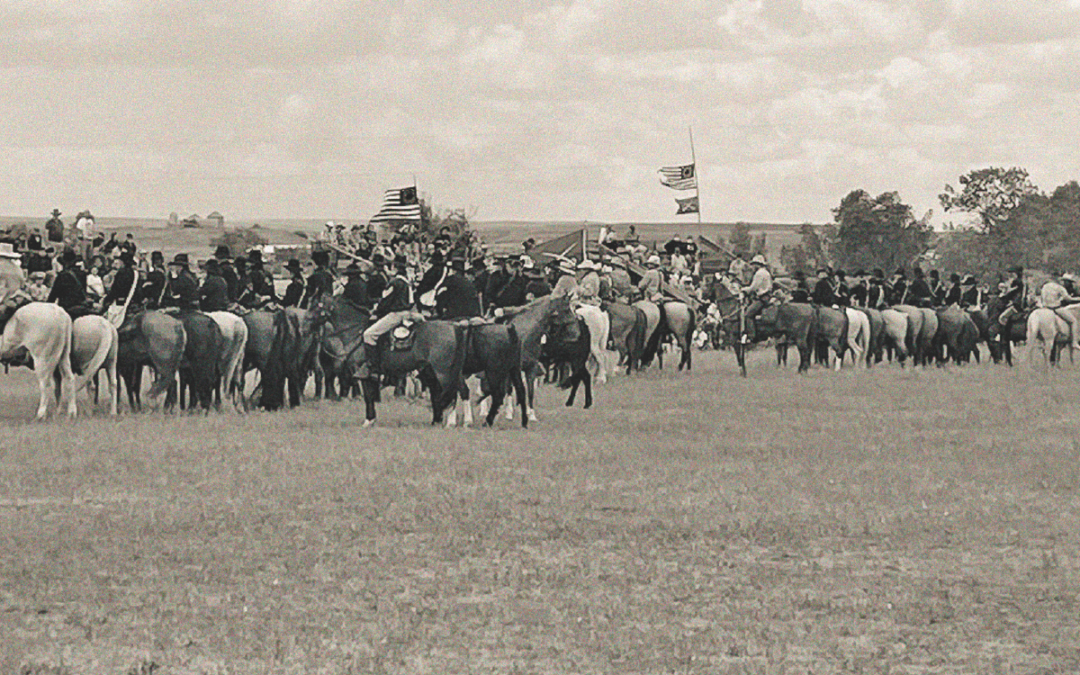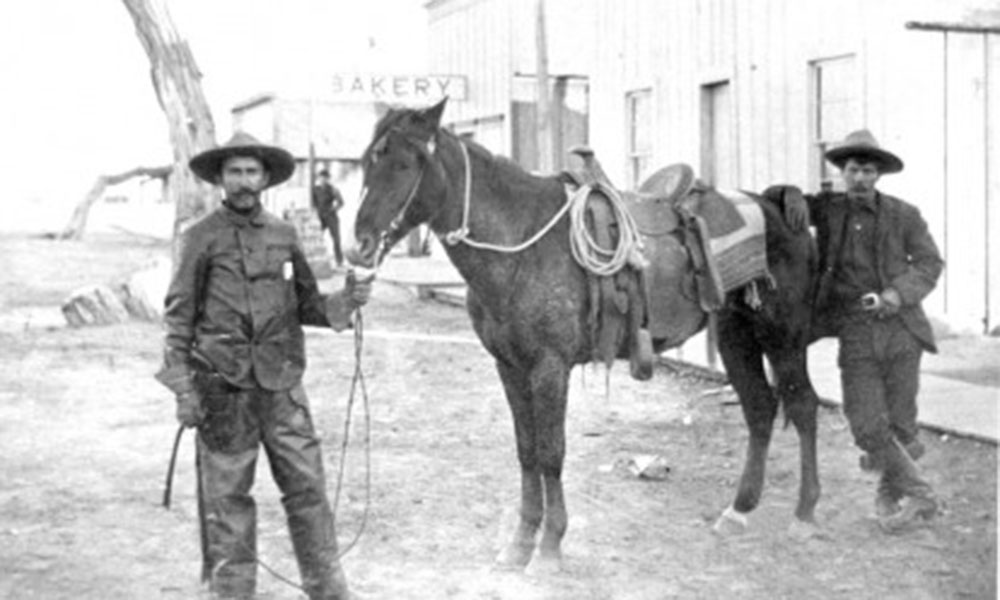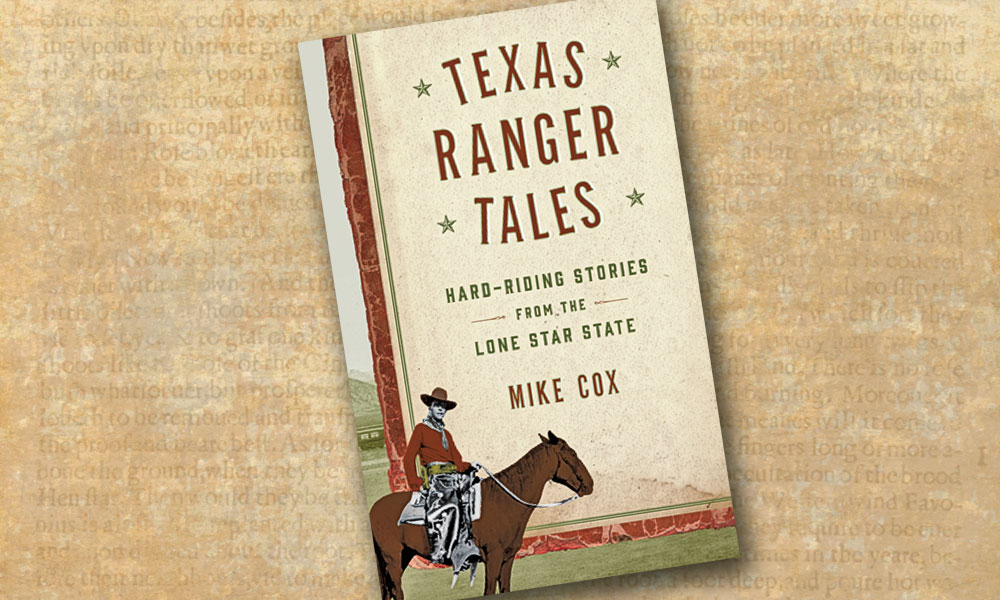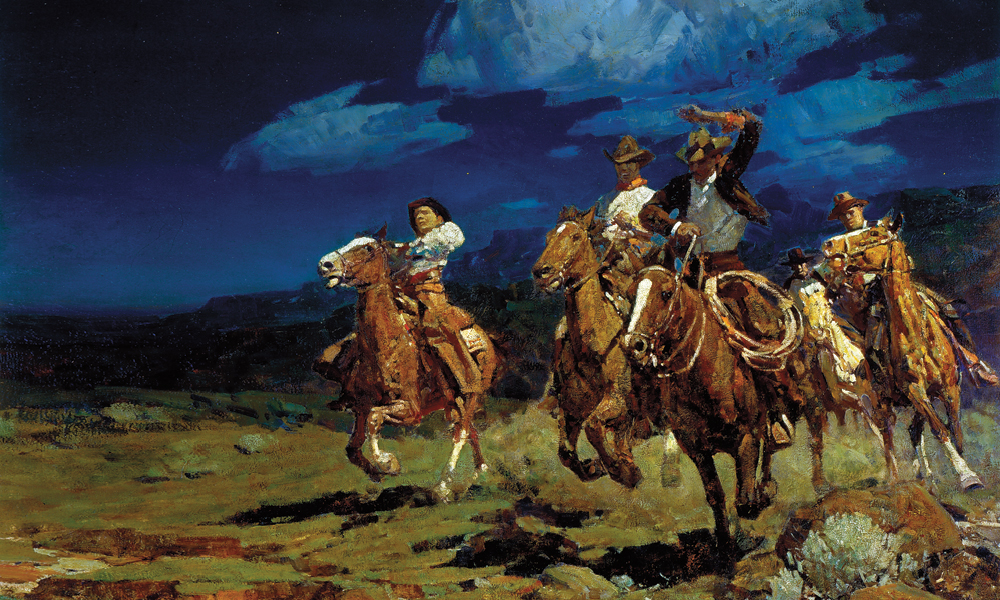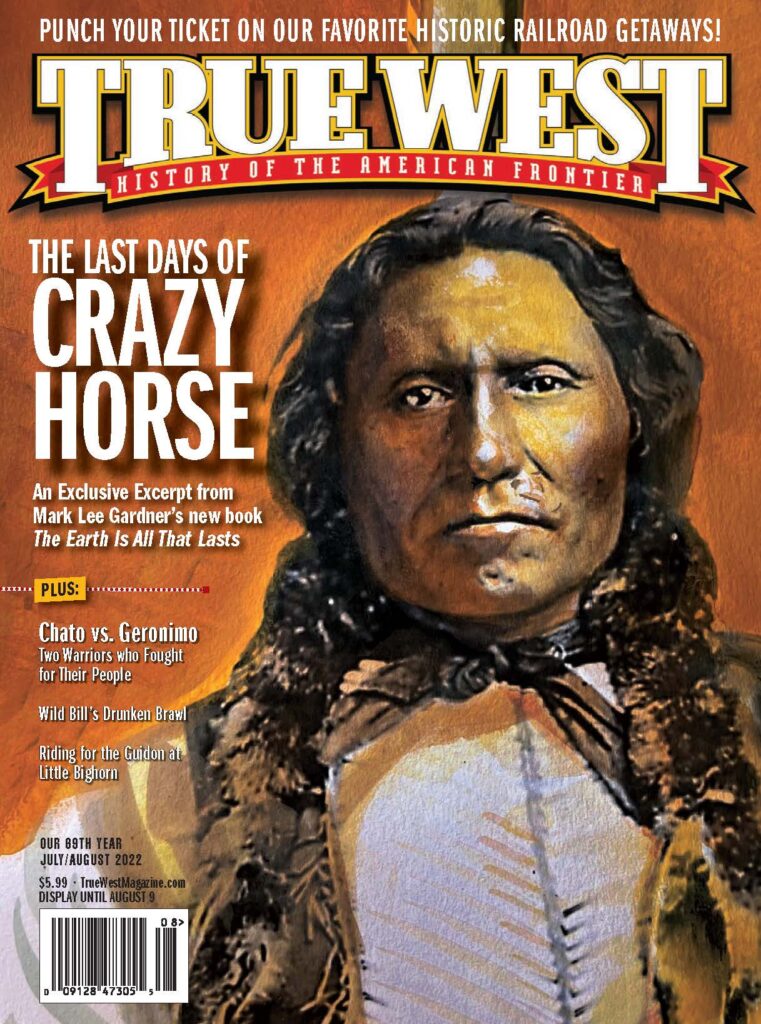U.S. Cavalry School at Little Bighorn Battlefield is a real-life history lesson.
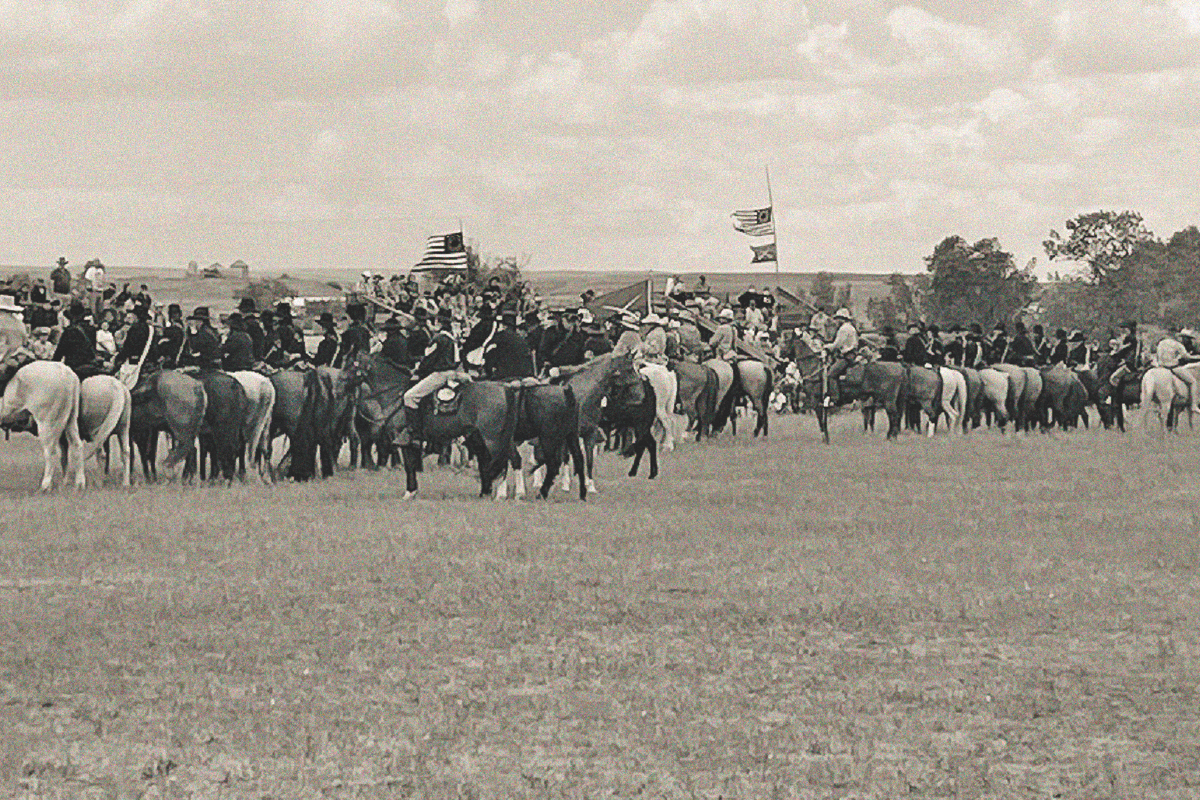
I stood on the banks of the Little Bighorn River at Medicine Tail Coulee Ford. Early one morning last June, I saw a small group of Indian ponies come down to the opposite bank for water. Their classic silhouettes in the predawn light of the Eastern sky were reflected in the water and caused me to have a reflection of my own.
I remembered when I was about seven or eight years old, playing Cavalry and Indians by a small creek that used to flow behind our homestead after a heavy rain. I was with my older brother. We were riding our horses back and forth through the creek and fighting or chasing make-believe Sioux and Cheyenne warriors. We were outfitted with black hats, light-blue denim shirts and dark denim jeans with a yellow crayon stripe down the legs along the outer seams. We were armed with wooden swords, pistols and carbines that were honed from old scrap one-by-four-inch lumber.
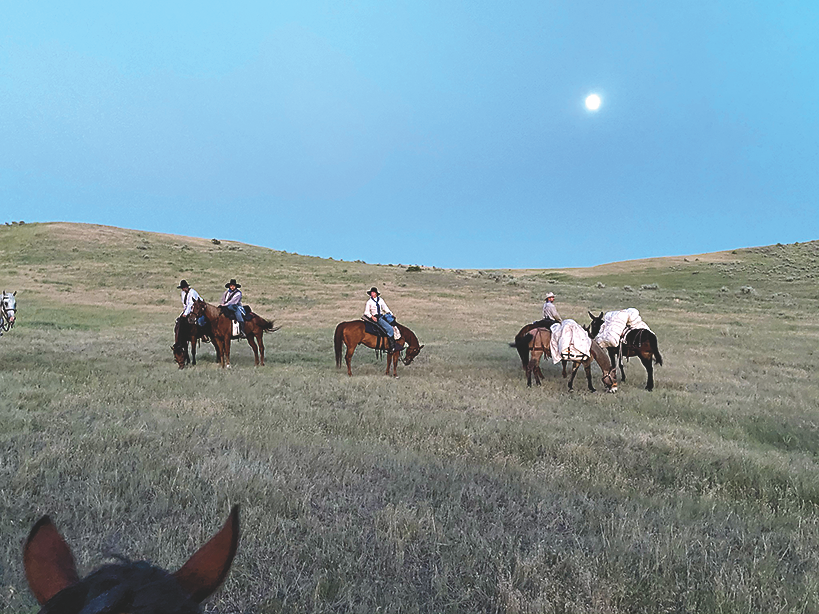
That was the beginning of my journey into the history of the American West, and I must thank my brother for my being at that hallowed spot that morning well over 60 years later. This is the spot at the ford on the Little Bighorn where two companies of Custer’s battalions tried to cross and attack the village. They were repelled by a brave band of Sioux warriors led by the War Chief Crazy Horse. I was imagining what was going through their minds at that moment, how they must have felt on both sides of that water—fear, anger or something else? I was looking out at the surrounding landscape, absorbing what it must have looked like. Much of it is as it was then; the large clay bluffs to the south, the coulee to the center and the Greasy Grass Ridge to the north.
I am here thanks not only to my brother, but the U.S. Cavalry School and especially the members of the Real Bird Family of Garryowen, Montana, who own the land upon which we are camped. It is the same piece of ground upon which the Sioux village was located that fateful day. Some of the old, towering and gnarled cottonwood trees may have been just saplings back then. Those trees were shedding their cotton-like balls of seed resembling falling snowflakes.
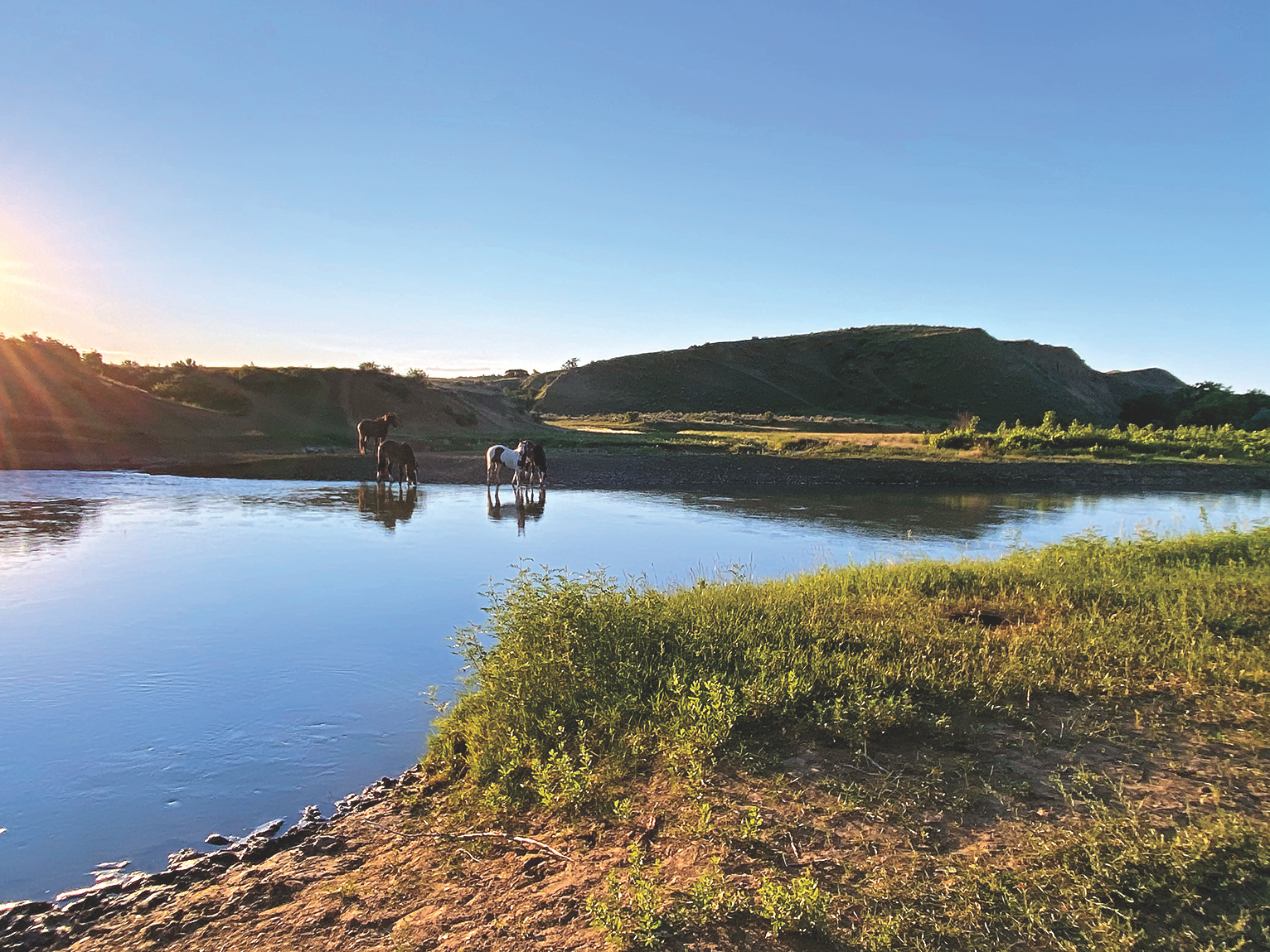
The U.S. Cavalry School is run by Keith Herrin of Fort Harrison, Montana. He has been teaching students of history for the last 15 years. Keith runs his school much like the Army, with the exception of the mess. The real Army does not have a master chef, at least not for the enlisted. I was expecting beans, bacon, hardtack and coffee. But we were served gourmet meals prepared by Chef Tony Schann, with help from Bridgette Van Houten and Julie Benson.
Many of the talented instructors are former military. They assign one student with one instructor, and the emphasis is on safety. This year the school provided an emergency physician, an EMT and an ER nurse to watch over the group of about 60 riders. This is a dangerous hobby, with large animals, guns and gunfire; anything could go wrong if you’re not paying attention. We were conditioned along with our mounts, and we were schooled on the anatomy and care of the horse.
We learned the correct way to approach the animal, communicate with it, and establish confidence and trust with one another. We were instructed in the proper way to saddle our mount with an 1870s reproduction McClellan saddle and gear. It is much different than a Western or English saddle because it sits toward the midsection of the horse’s back. We were taught the military way of mounting and dismounting. This comes in handy when lifting yourself up into the saddle with all your accoutrements: you must navigate your leg over the saddlebags, bedroll, great-coat, shelter half, gum blanket, poncho and other items. This is especially more complex with a carbine over your shoulder. But these movements were taught gradually, not all at once. Things got heavier and more complicated as the days of training progressed.
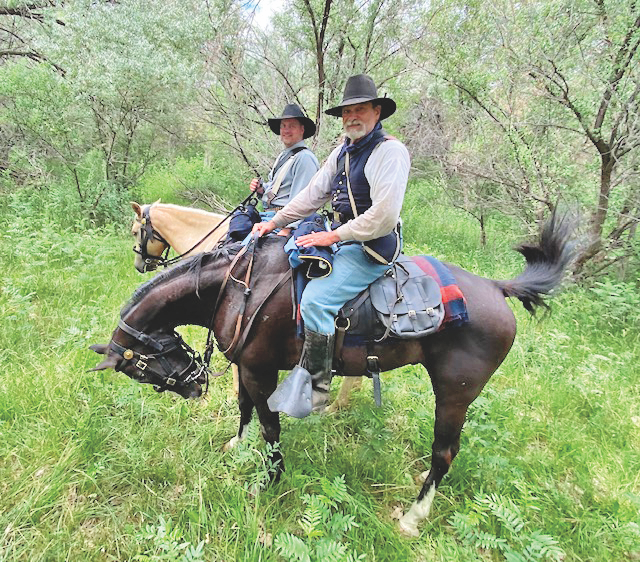
Once we were mounted, we rode around the large corral with our instructor in twos, meaning our half of the squad of four. We tried to ride stirrup to stirrup, always looking to our right to keep abreast with our bunky, a pet name for our comrade-in-arms. We rode in file (ones) or by twos and then in fours. We drilled in maneuvers, executing turns by fours, flanking movements (90-degree turns), right-about (making a 180-degree turn), right into line (when the whole regiment forms up into one long line, stirrup to stirrup). Then we worked on getting our horses in line and dressed right, straightening the formation.
It’s an effort to move and position your mount in a tight formation. I learned to maneuver the horse sideways, a movement called side pass. Not all horses are trained to do that well, and mine was one of those. It took me all eight days to persuade Cosby, my 15.2 hands gelding, to do so. What I had learned about horseback riding in the past all went away. I had to relearn to ride the Army way. It was tough, educational, but fun.
We had classroom and field lessons on the history of cavalry horsemanship and tactics. We learned the importance of all the different formations and maneuvers and how to do them correctly and quickly. Our bunky’s and our own lives were dependent upon executing them properly.
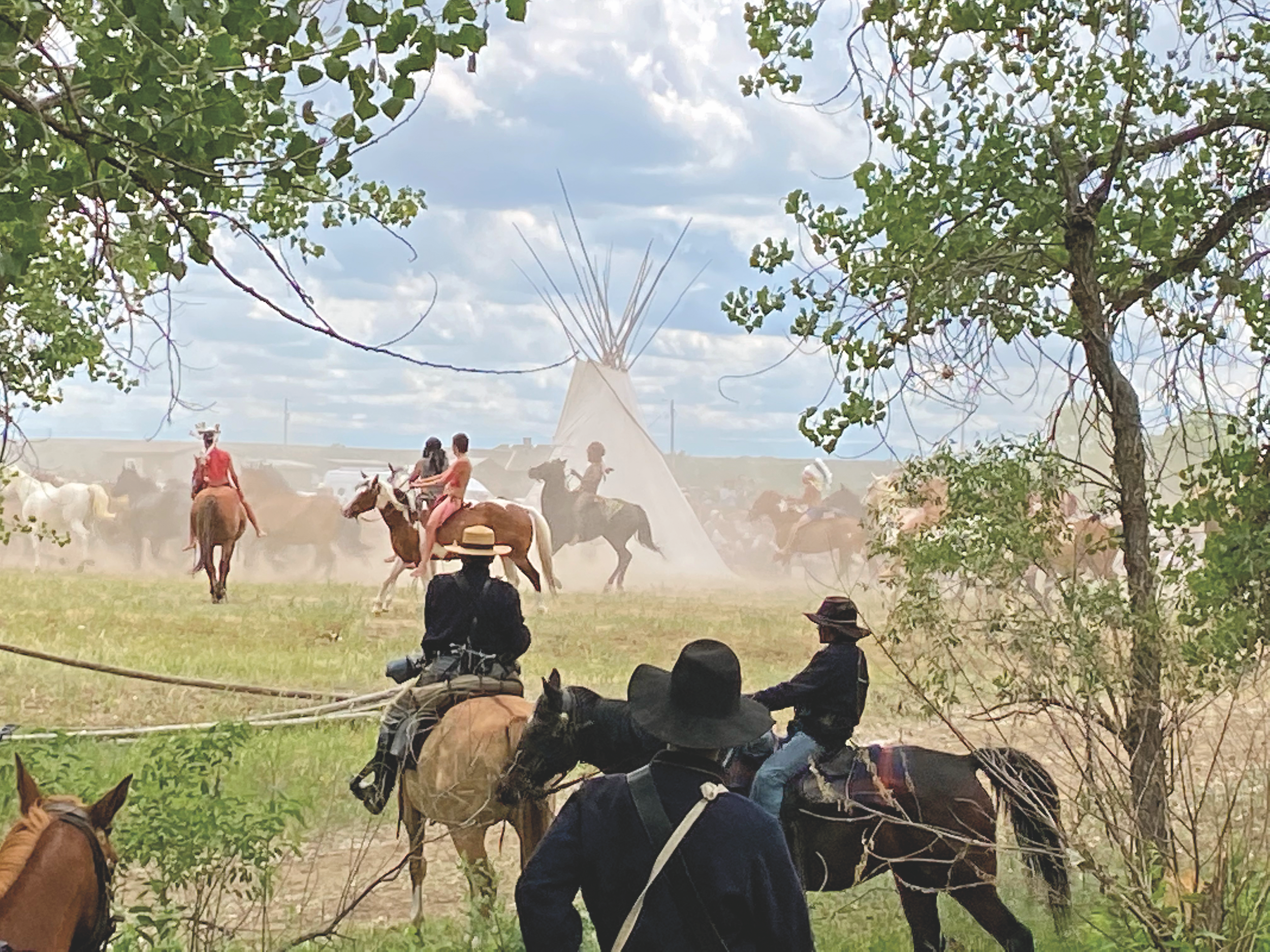
One of the more interesting experiences was crossing the river mounted. Due to the movement of the horse and the flow of the water, one can suddenly become disoriented, called vertigo. The horse begins to drift with the water. We were told to fix our eyes on an object on the opposite shore and focus on it. If the horse drifts with the current, we were to rein it back into line. One must focus, as even our peripheral vision was experiencing vertigo. It’s not as easy as it looks.
Now I understand why so many animals drown crossing rivers; they get disoriented and drift downriver to a swifter current and perish.
Another experience for the more adventurous or younger troopers was an overnight patrol, camping in the wooded area close to Reno’s timber fight. We all mounted up and rode out in two companies. The first company was to stay and camp out. The second company merely followed. It comprised the less adventurous types who needed a cot to sleep on and a healthy hot breakfast come morning.
Additionally, I was lucky enough to be chosen one of 16 troopers to form an honor guard. We were allowed to ride from our campsite into the Little Bighorn National Park. We were escorted by the Park Police to the Last Stand Hill and the monuments of the 7th Cavalry and the American Indians who died defending their way of life.
We rode to the top of Last Stand Hill opposite the 7th’s Monument and came into line next to the Native American monument. Park officials and our own Gary Stewart, aka Lt. Col. G.A. Custer, said a few appropriate words to remind us of the tragedy that occurred here 145 years ago. Miss Montana, Jessica Criss of Bozeman, Montana, led us all in “Amazing Grace,” followed by trumpeter Mark Jacobsen who played taps.
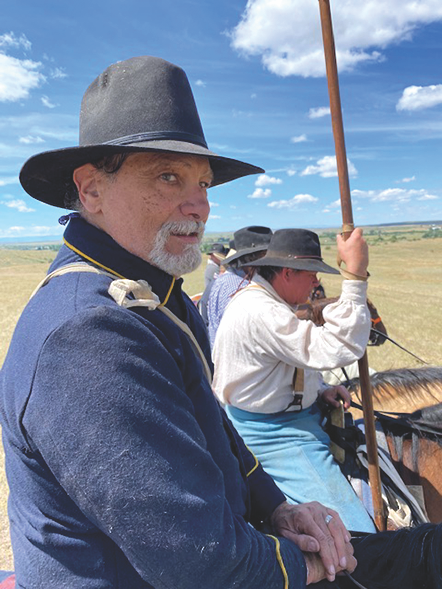
After the ceremony, we remained for a short while to greet the visitors and allow them to take photos. Some of us older troopers dismounted and allowed some of the younger ones to take the reins of our mounts so that they also had the opportunity to ride in formation within the park.
Once back in camp, preparations were underway for the reenactment. The presentation was written and produced by the Real Bird Family. In it, Jack Real Bird tells the story of the Crow and other Plains Indians tribes.
Mr. Real Bird and his brother then tell of the impact of the White man, beginning with Lewis and Clark, followed by trappers, miners and wagon trains, heading for the goldfields. Tribes had to travel farther and farther to hunt game and ventured into other tribes’ hunting areas. Conflicts arose among the Indian tribes and with the White settlers. The Army was sent in to separate the parties and bring peace to this region. But the continued broken treaties, the building of forts and then the railroads further aggravated the Plains People and pushed them into war.
That was our cue, and we paraded out in a column of fours. General Custer and his headquarters staff led the way under the Custer banner, a red over blue sparrow tail Gideon with white crossed sabers. We were followed by M troop, at intervals, and then the color guard of four with the national colors, followed closely by H troop. We all came into line, stirrup to stirrup, and presented our colors. Introductions were given, followed by the screaming, yelling and war cries of the plains Indians with young Crow braves charging out in full war paint and loincloths. These war cries raised the hair on the back of my neck. Thank goodness my horse didn’t flinch since I was a bit unsettled. These war cries were meant to intimidate us. It worked on me!
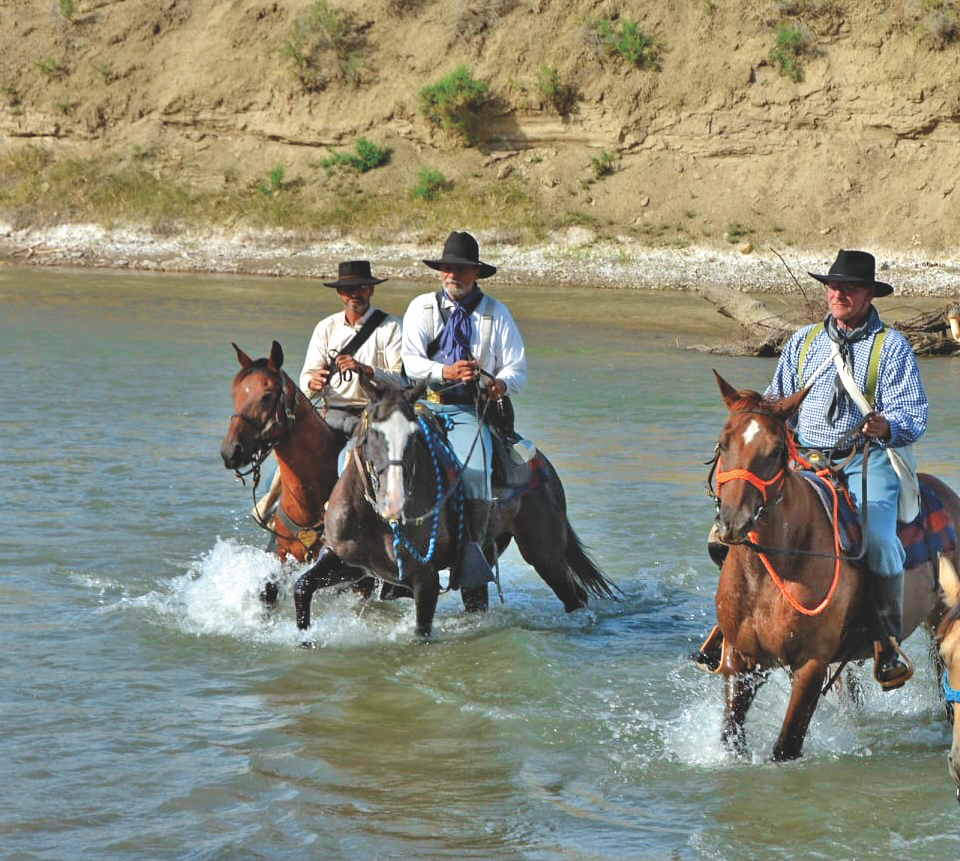
Later we portrayed Reno’s attack. My assignment was to be a horse holder, as I am too old to dismount and remount in the thick of battle. While the companies splashed across the river at a gallop, my horse slowed to a walk and took its own sweet time crossing. Once across, his long stride allowed me to catch up with the rest of the company. He never minded taking the ramping paths, so it flew up and over the steep cut bank and into the chaos unfolding. The troopers had dismounted and looked desperately for their horse holders. In the mass confusion, we all got separated. I couldn’t get to my squad fast enough, so I took those horses that were closest to me. I hoped I would remember whose horses I had because shortly the skirmishers would be needing to remount and make a hasty retreat. There was noise, dust, smoke, gunshots and war cries.
Officers screamed at the NCOs, who in turn barked orders to the troops to stay in line, do their duty, and maintain fire discipline. Then the bugle called and retreat was ordered. We horse holders needed to find our comrades so they could remount and beat a hasty retreat back across the river and to safety beyond. Some of those troopers didn’t make it, and we had to leave them behind lest we become victims of the counterassault. However, once across, we were pursued by some of the most marvelous horsemen riding bareback on painted ponies. We were chased until we reached the high ground of an upper bank.
This experience was re-peated for the Last Stand where we encircled. Everyone got off their horses and started to fight on foot. All was lost; the Indians were too many and the soldiers were out of ammo. The shooting diminished until all had fallen. The dust started to settle. Then came the celebratory cries of triumph from the braves.
Recall was sounded. The dead came back to life, and the audience applauded. Again we all lingered a bit so the visitors could come to the field, meet the participants and take photos. We all congratulated each other for having survived without injury from getting bitten, kicked, burned or thrown off.
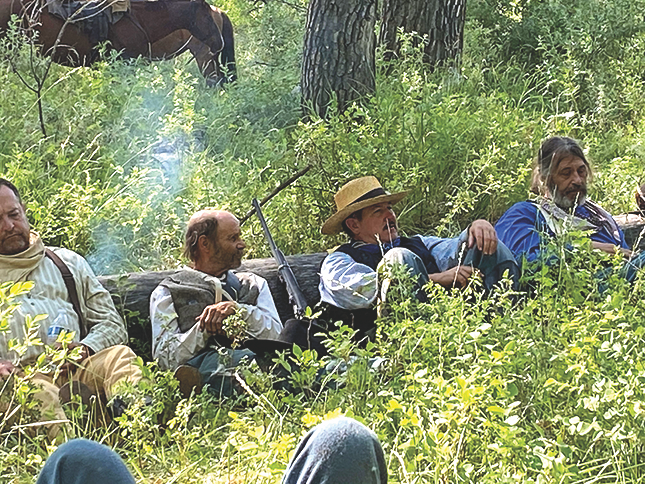
We repeated the performance two more days. Then came cleanup time.
Thinking back over those eight days, I decided it was really worth the money, time and effort. We came and saw the elephant. With all the noise, smoke, dust and gunfire, it was easy to imagine the real thing. I think that was the U.S. Cavalry’s School’s main goal with their Custer’s Last Ride adventure course, and to do it safely. They delivered. It was a wonderful and memorable experience. It was thrilling, exhilarating and exhausting all at once. But it was a one-and-done experience for this old trooper. I’m glad I did it, but I will let some of the younger students return next year. I discovered there is a scholarship fund for those students who do not have the resources for the cost of travel, tuition, horse, accoutrements, uniform, weapon rental, transportation from Billings’ airport, a cot in a wall tent and three great meals a day. It can be expensive, but what you receive is a very good deal. Some students can work as interns to help defer expenses. If I do return, it will be as a spectator. I think I will donate to that scholarship program so others can experience the joy of learning firsthand from experts the history of this sacred place.
For more information on the U.S. Cavalry School, visit their website at USCavalrySchool.com.
Dennis Tuberty is an active Western reenactor who was raised on a farm near Albert Lea, Minnesota. Retired from the construction industry, he and his wife Kathryn live in Prescott, Arizona. In 2021, he was named Volunteer of the Year by the Prescott Western Heritage Center.

